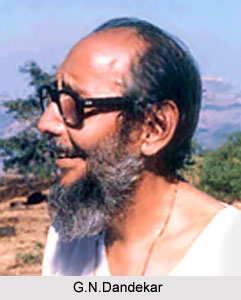 Regional literature in Maharashtra focuses on the life and circumstances in specific regions of Maharashtra. This body of literature which is recognized as regional literature owes much to the works of S.N.Pendse (1913). His novels have focused on the people and situations of the northern Konkan region of Maharashtra. His intimate knowledge of the economy, environment, and culture helps him re-create it with authenticity in his novels. In his first novel, `Elgar` (1949), he handles the sensitive issue of communal conflicts in the wake of tragic events of Noakhali in a coastal village. `Haddapar` (1950) and `Garambicha Bapu` (1951) established his reputation in the Marathi literary world. His characters of school teacher Raje and Bapu are memorable. In Garambicha Bapu, he utilizes the natural environment of Konkan and the tradition-bound ways of the village community to narrate a romantic story. `Hatya` (1954) and its sequel, `Kalandar` (1959), `Yashoda` (1957), `Rathachakra` (1962), `Lawhali` (1966), and `Octopus` (1972) are representative of his work. He focuses on realistic pictures of the region and its people.
Regional literature in Maharashtra focuses on the life and circumstances in specific regions of Maharashtra. This body of literature which is recognized as regional literature owes much to the works of S.N.Pendse (1913). His novels have focused on the people and situations of the northern Konkan region of Maharashtra. His intimate knowledge of the economy, environment, and culture helps him re-create it with authenticity in his novels. In his first novel, `Elgar` (1949), he handles the sensitive issue of communal conflicts in the wake of tragic events of Noakhali in a coastal village. `Haddapar` (1950) and `Garambicha Bapu` (1951) established his reputation in the Marathi literary world. His characters of school teacher Raje and Bapu are memorable. In Garambicha Bapu, he utilizes the natural environment of Konkan and the tradition-bound ways of the village community to narrate a romantic story. `Hatya` (1954) and its sequel, `Kalandar` (1959), `Yashoda` (1957), `Rathachakra` (1962), `Lawhali` (1966), and `Octopus` (1972) are representative of his work. He focuses on realistic pictures of the region and its people.
Another writer who has contributed to regional literature is Jayawant Dalvi (1925). He is a prolific writer who has handled short story, novel, humour, and drama with equal expertise. He has more than 14 novels, 10 collections of short stories, eight plays, and more travelogues and collections of humorous stories. He writes with sensitivity, vigour, and compassion for human beings in contemporary society and their varied lives and the worlds they inhabit. He has relied on the experiences of the middle class for his themes. However, in his novel `Chakra` (1963), he portrays the stark reality of slum life in a very provocative manner. This novel helped him in establishing his reputation as a competent writer. His other novels, `Sare Pravasi Ghadiche,` `Vedagala, Swagat,` and `Adhantari` are noteworthy. His play Sandhya Chhaya explores the problems and inner turmoil of an old couple. His other plays reflect his interest in contemporary social and political issues.
M. M. Karnik`s (1933), another writer of regional literature, has produced stories that are situated and based in South Konkan. Through his stories, he brings out the warmth and humor of people as well as the natural beauty of this coastal region.
G. N. Dandekar (1916) is a prolific writer who has written on history, religion, literature, culture, and mythology. He has also contributed to various literary genres but is known for his historical novels set in Marathi history, like `Kadambarimaya Shivakaia,` `Baya Daar Ughada,` `Harahar Mahadeva`, and `Jhunjhar Machi`. He continues the tradition of the romantic portrayal of Maratha history as a part of cultural revivalism. The transitional period from colonial control to political independence and the fading traditional values in the wake of modern industrial society have helped him to sustain that tradition. His reaction to social change is to romanticize traditional society and its ways. The remorseful and nostalgic anti-modern attitude reverberates in his `Shitu` (1955), `Padghavali` (1956), `Pawanakathacha Dhondi` (1958), and `Machiwarala Budha` (1958).
Thus discussed above is the regional literature of Maharashtra.



















